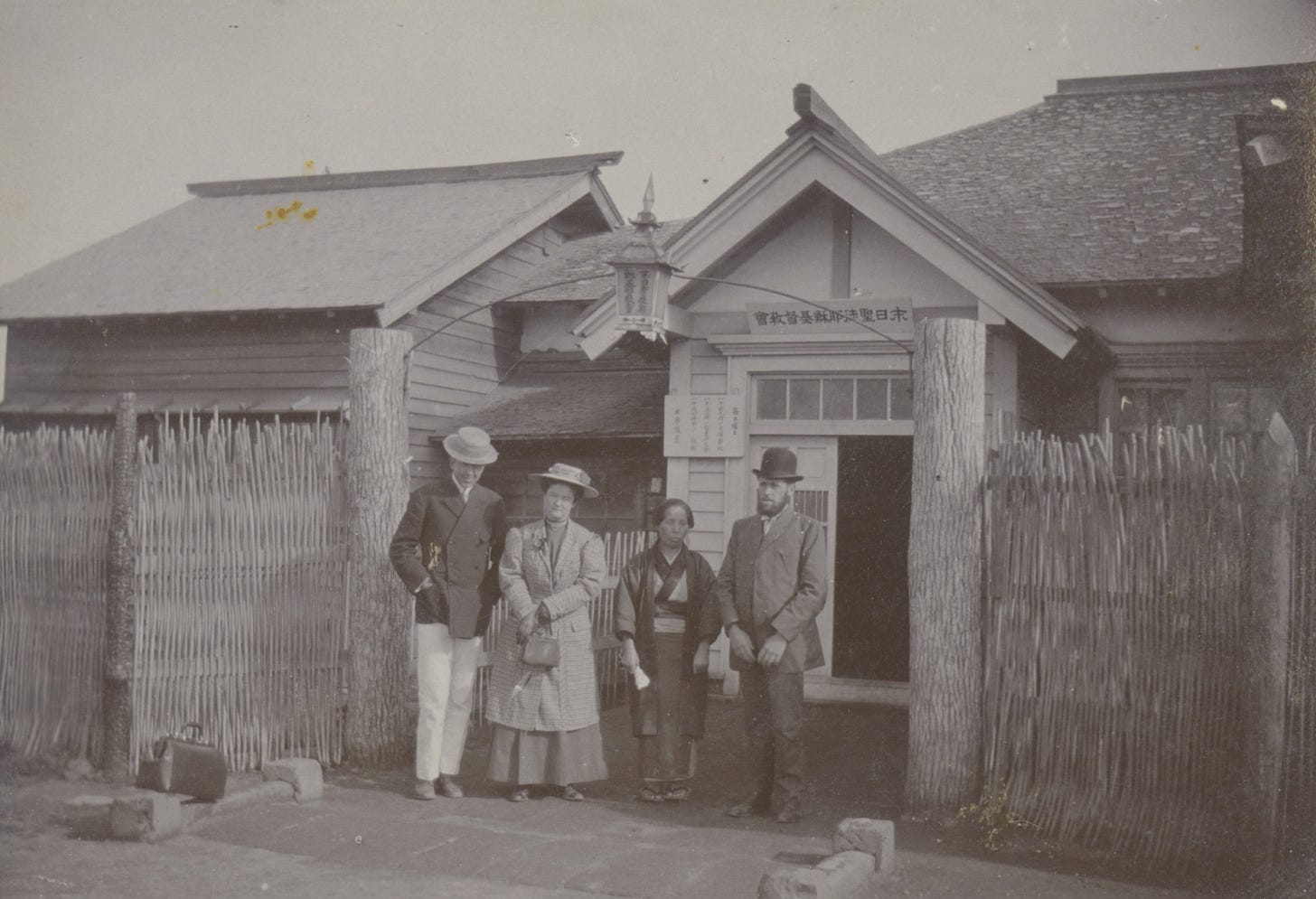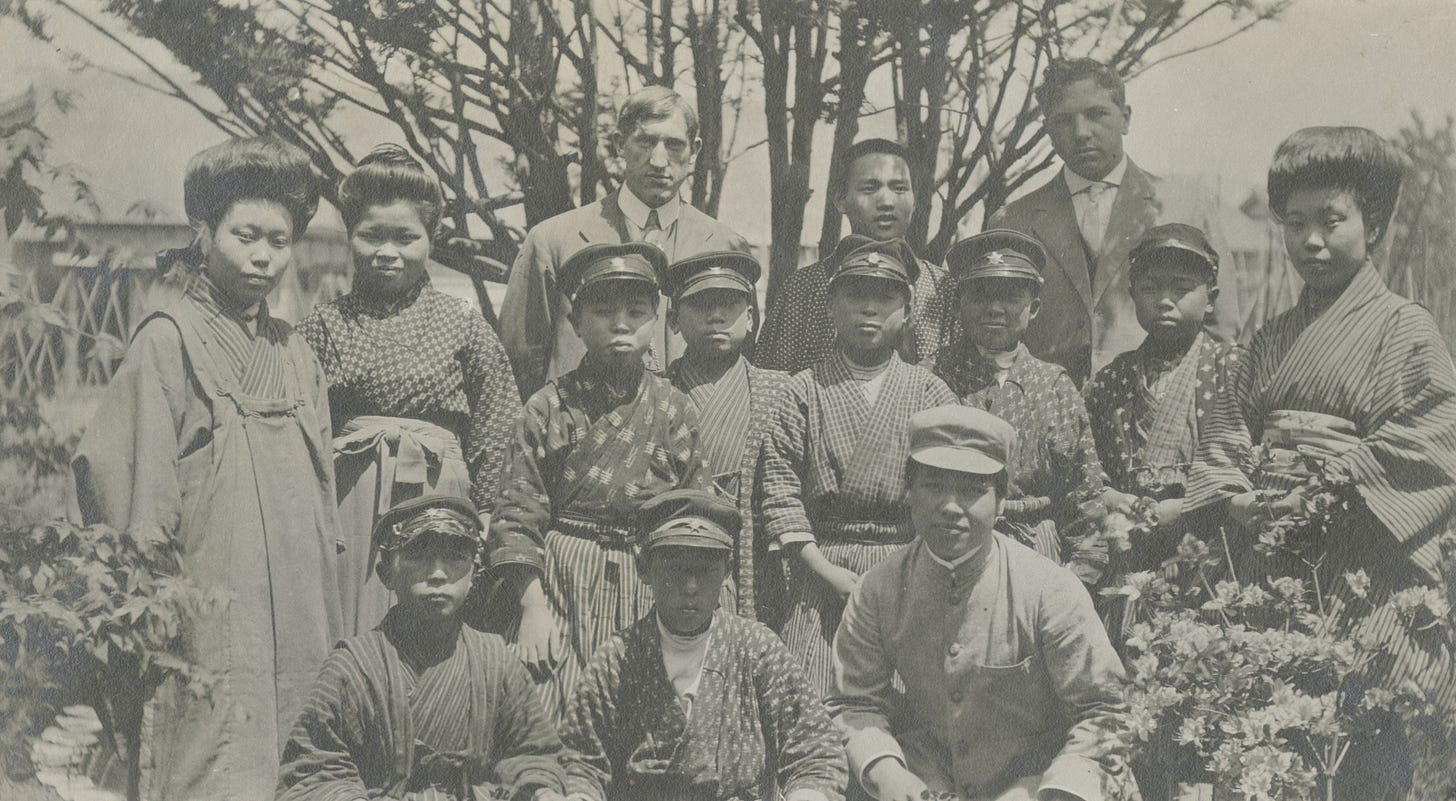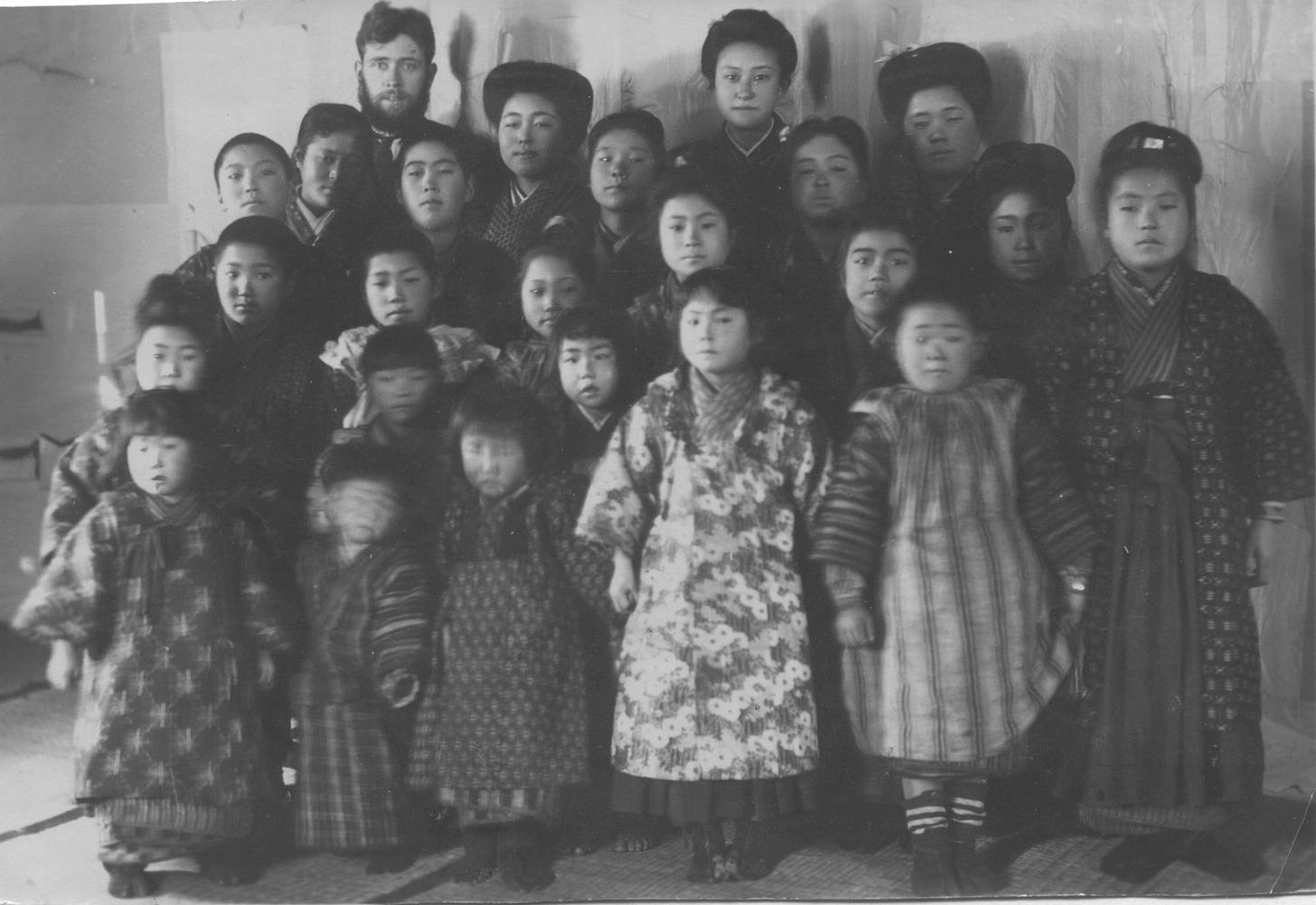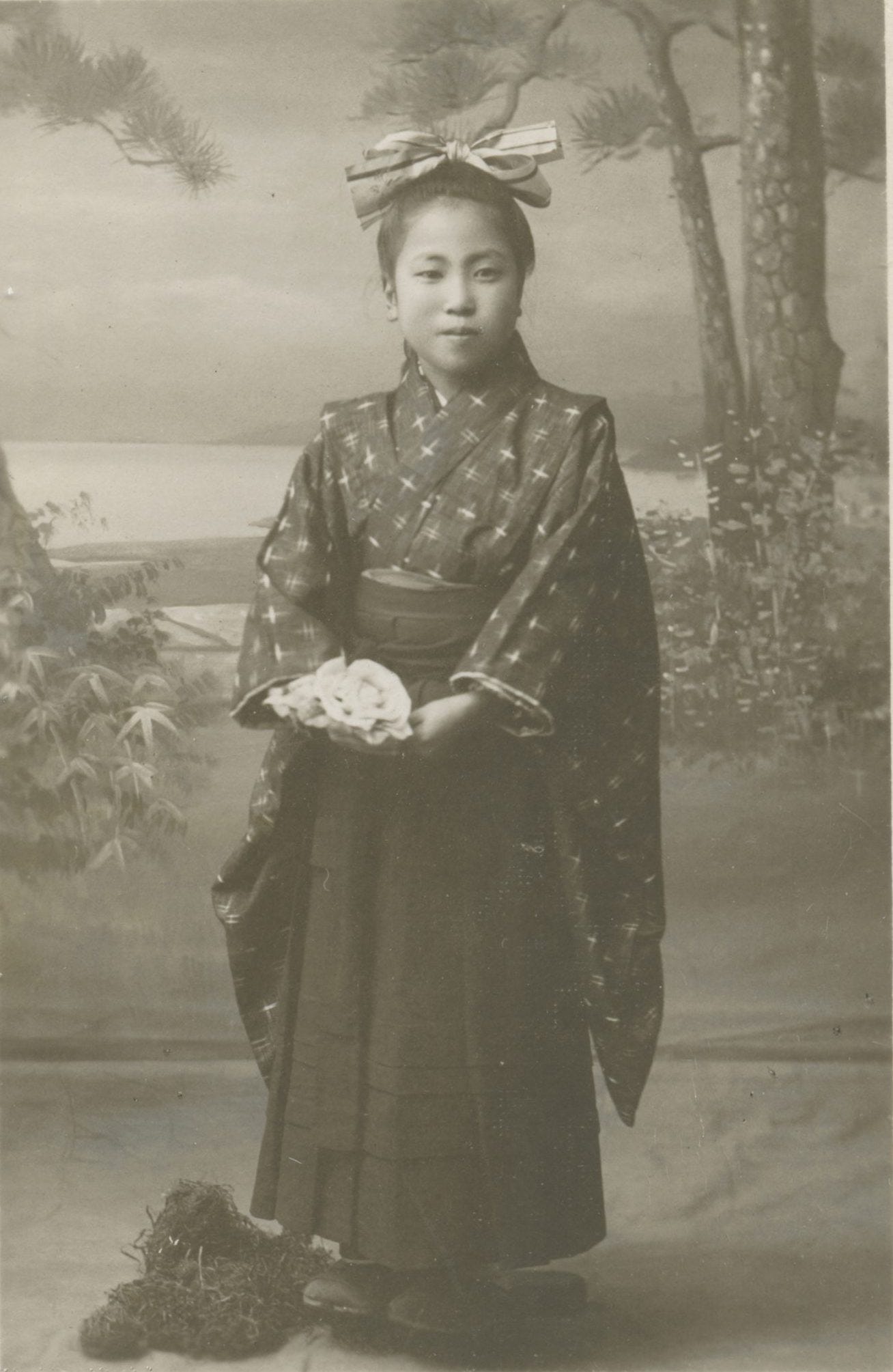"Perhaps the most diligent in the world"
Religious education and Latter-day Saint proselyting in late Meiji Japan
As The Church of Jesus Christ of Latter-day Saints sought to establish itself in Meiji Japan (1868-1912) it did so at a time of pronounced change in Japanese society. The Meiji Restoration, which began in 1868, was an ongoing movement to strengthen Japan and to open the country up to the global community. The fear was that failing to seize the initiative and learn from foreign countries they would one day be subjugated. For more than forty years Japan underwent radical changes to modernise and industrialise while seeking to balance modern developments with the nation’s traditional Eastern values.1
In the opening years of the twentieth century, political forces were pushing for increased economic productivity and sought to socially engineer greater co-operation in society. In 1906 the Social Education Association proclaimed that the goals of the nation should be geared towards “creating a new Japanese people”.2
The inward consideration of what it meant to be Japanese came on the back of several major regional events. In 1905 Japan won the Russo-Japanese War and in 1910 it annexed Korea which had been a protectorate of Japan since 1897. The imperial ambitions of Japan were moving apace, but there were concerns about domestic stability. Modernisation and industrialisation were in full flow and there was an eagerness to become akin to Western countries.
In the Meiji period, education became increasingly important to the commoner class. It was in 1886 that elementary education became compulsory and over the following twenty years the number of years of compulsory education increased.3 Jonathan Wilson notes that education was only one part of the equation:
The Meiji period saw Japan rush headlong to adopt Western technology, ideas, and institutions in an attempt to create a strong nation able to avoid colonization after centuries of isolation.4
It was during the Meiji period in 1872 that freedom of religion was established in Japan with Christian missionaries permitted to preach their faith.5 Japan’s reverse course opened the way for Protestant and Catholic missionaries to enter the country. The Bible was translated into Japanese in the 1880s and Christianity developed a presence, albeit gradually.
Since the 1870s there had been conversations between Latter-day Saint leaders and Japanese officials about missionary work in Japan.6 Later, in 1895, the Japanese Consul in San Francisco asked a Church official whether they had any plans to send Latter-day Saint missionaries to Japan. When missionaries arrived in 1901 other Christian groups already had an established presence in Japanese society.7 Nonetheless, there were some Japanese Latter-day Saints who had emigrated to the United States of America and joined the Church there before the opening of the mission.8
The Japanese Mission
The Japanese mission had a rocky start and in many ways the first four missionaries were unsuited for a mission as none of them spoke the language or knew anything about the country. Issues surrounding polygamy marred their arrival in the country and religious discrimination from existing Christians made things difficult, but soon enough they gained some traction.9
Latter-day Saint missionaries were first assigned to Sapporo, Japan, on 23 June 1905, some four years after missionary work began in the country. The first baptism in Sapporo didn’t come until more than a year later when Kawanaka, Aritatsu, was baptised on 3 August 1906. It was also at the Sapporo Normal School that the Church’s Brief History of the Church was translated into Japanese. Brother Kawanaka, along with other Japanese converts, helped to translate portions of the Book of Mormon.10
Sapporo was the principal headquarters of the Church for the northern island of Hokkaido. Missionaries worked in the city, but there were regular forays to smaller settlements to hold Sunday Schools and visit with interested persons. In many contexts Christian proselyting was accompanied or preceded by education.11 Westernisation was often seen as a necessary step before the adoption of Christianity could occur and so religion utilised education in its outreach efforts. This was convenient as there was mutual interest from some Japanese to receive a Western education.12 Religious schools provided interaction with Westerners and their ideas, but that did not mean the Japanese students wanted to adopt a Western religion, although some did.

Thousands of pamphlets were handed out by Latter-day Saint missionaries in Japan but few quality gospel conversations followed. Attendances at the Sunday Schools often far exceeded those willing to attend sacrament meetings. The situation in Sapporo was modest yet sufficient and a nucleus was formed.
English and Japanese study classes were an important aspect of Latter-day Saint missionary efforts and were often used to begin missionary work in an area. In 1910 there were three missionaries stationed in Sapporo and there were at least nine different classes held in the city and in surrounding areas during the week to invite people to. However, despite the efforts of full-time missionaries and members, the work was slow. At the end of 1910, there were 41 members of the Church in Japan across three districts, with only 16 members in Sapporo.

William Ellis
William Ellis was one of the four missionaries assigned to Sapporo and in due time he became Confce President. Japan was his first mission and he ultimately served from October 1908 until May 1913. In a letter to his half-brother, William noted the indifference he experienced in Japan concerning religion:
While in Japan I have always been busy and have tried to use every opportunity to defend the Gospel. But we don't have many attackers so there is not much defending to do. The enemy we have to deal with is indifference. The people don’t seem to think or care about the future life. Heaven and Hell is all the same to them.13
William was heavily involved in running Sunday Schools in and around Sapporo. The Teine Sunday School was in operation around this time and William and his companion would travel to the settlement to hold a Sunday School and a Book of Mormon class. The students in Teine enjoyed meeting with the elders. On one occasion William noted that one Monday the missionaries met with the Sunday School students for games.
From Elder Ellis’ account, there appears to be minimal if any pressure on those attending meetings to accept the gospel or be baptised. Day-to-day activities included attending Sunday School and Book of Mormon classes, handing out tracts, visiting Saints and friends, and general social interactions with people. There were gospel conversations, but no overwhelming sense of a desire to mass baptise people.

Kiyo
Many of those who attended Latter-day Saint Sunday Schools were children. In April 1912, Elder Ellis visited the Hosoda family in Sapporo. There he spoke to the mother of Hosoda, Kiyo, a regular Sunday School attendee. She was twelve years old and had been attending a Latter-day Saint Sunday School for the last five years or so.
Kiyo impressed Elder Ellis. In April 1912 he decided to write a letter to the Juvenile Instructor concerning the work in Sapporo and the positive example that she was. He noted that the missionaries used the Juvenile Instructor in the lessons as content. In the letter he noted that two sisters, Kato, Yuki, and Kato, Hana, had joined the Church through the Sunday School. Then he noted the following details about Kiyo:
There is also in this school the best Sunday School girl in Japan, and perhaps the most diligent in all the world. She is Hosoda Kiyo, age twelve years. About five years ago she came to this school for the first time, and has not been absent once since. Preparation and punctuality are as important to her as attendance. Although a child, her faith is strong. One Saturday evening she became quite ill, and was no better the next morning. They sent for a doctor, but as he was too slow in coming, her father went to call him the second time. During his absence Kiyosan got up and came to Sunday School. No amount of persuasion could get her to return until Sunday School was out. And when she did return she was well. While talking with her classmates she tells those who say they are busy, that she also has work at home, but that is no excuse for staying away from Sunday School. Rather than miss a Sunday when Sunday School and Public School parties conflict, she has come extra early to see if it couldn't be possible to hold an extra session.14
Latter-day Saint missionary work continued in Sapporo until the closure of the Japanese Mission in 1924 on account of new legislation in the United States excluding Japanese people, minimal growth, and logistical issues.15 For years after, members in the city communicated with each other and Church officials, such as Fujiyara Nara and Takeo Fujiwara, despite their isolation.16 The few remaining members in Japan held on and some were able to welcome the Church back after the Second World War.
Latter-day Saint Sunday Schools were an important part of missionary daily life in Japan during the Meiji period, and although few people joined the Church it was part of a wider cultural phenomenon whereby Christian groups sought to use education to instruct, attract, and recruit new members to their faith. Today Christianity is still a minority religion, but there were likely hundreds of boys and girls who attended a Latter-day Saint Sunday School and were introduced to at least some of the doctrines.
As far as we know, Kiyo never did join the Church and we don’t know to what extent she accepted the Restored Gospel. Yet, for several years at the end of Meiji Japan, at least one Latter-day Saint missionary considered her to be an excellent Sunday School student and “perhaps the most diligent in the world”.
See Mark Ravina, Japan’s Meiji Restoration in World History (Oxford: Oxford University Press, 2017).
Akira Iriye, ‘Japan's drive to great-power status,’ in Marius B. Jansen, ed. The Emergence of Meiji Japan (Cambridge: Cambridge University Press, 1995), p. 327.
Arthur K. Loomis, ‘Compulsory Education in Japan,’ The Educational Forum, Vol. 27, No. 1 (1962), p. 15.
Jonathan Edward Wilson, ‘The Child in Japanese Christian Context: Christian Influence during the Meiji Era,’ Mediator, Vol. 17, No. 1 (2022), p. 42.
Fumiko Fukase-Indergaard and Michael Indergaard, ‘Religious Nationalism and the Making of the Modern Japanese State,’ Theory and Society, Vol. 37, No. 4 (2008), p. 355.
Ronald W. Walker, ‘Strangers in a Strange Land: Heber J. Grant and the Opening of the Japan Mission,’ Brigham Young University Studies, Vol. 43, No. 1 (2004), pp. 233-234.
John P. Hoffmann, Japanese Saints: Mormons in the Land of the Rising Sun (Lanham, MD: Lexington Books, 2007), p. 24.
Shinji Takagi, ‘Tomizo and Tokujiro: The First Japanese Mormons,’ Brigham Young University Studies, Vol. 39, No. 2 (2000), pp. 73-106
Frederick R. Brady, ‘Two Meiji Scholars Introduce the Mormons to Japan,’ Brigham Young University Studies, Vol. 23, No. 2 (1983), pp. 167-168; and Shinji Takagi, ‘Mormons in the Press: Reactions to the 1901 Opening of the Japan Mission,’ Brigham Young University Studies, Vol. 40, No. 1 (2001), pp. 141-175.
Murray L. Nichols, ‘History of the Japan Mission of The Church of Jesus Christ of Latter-day Saints, 1901-1924,’ unpublished Masters thesis, Brigham Young University (1957), p. 128.
Irwin Scheiner, Christian Converts and Social Protest in Meiji Japan (Ann Arbor, MI: University of Michigan, 2002), pp. 13-14.
Scheiner, Christian Converts, pp. 21-22.
Letter from William S. Ellis to Claude A. Ellis, 14 March 1913. From FamilySearch.
William S. Ellis, ‘Hosoda Kiyo,’ Juvenile Instructor, Vol. 47, No. 9 (1912), p. 507.
Murray L. Nichols, ‘History of the Japan Mission of The Church of Jesus Christ of Latter-day Saints, 1901-1924,’ unpublished masters thesis, Brigham Young University (1957), p. 56; and R. Lanier Britsch, ‘The Closing of the Early Japan Mission,’ Brigham Young University Studies, Vol. 15, No. 2 (1975), pp. 171-178.
J. Christopher Conkling, ‘Members Without a Church: Japanese Mormons in Japan From 1924 to 1948,’ Brigham Young University Studies, Vol. 15, No. 2 (1975), pp. 191-214.


